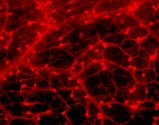
COBRE
Department of Ophthalmology
University of Oklahoma Health Sciences Center
HOME | PI | PJIs | CORES | MENTORS | IAC | EAC | SPOTLIGHT | SEMINARS | CALENDAR | AFFILIATES
John Ash, Ph.D.
Wei Cao, Ph.D.
Michael Ihnat, Ph.D.
Yun Le, Ph.D.
Raju Rajala, Ph.D.
Promising Junior Investigators (PJIs)
Five promising junior investigators have provided research proposals in this application. Each has already submitted applications for funding for their independent research projects and several have received small awards.
John Ash, Ph.D. is a well-trained molecular biologist who did a postdoctoral fellowship with Dr. Paul Overbeek, a vision researcher at Baylor College of Medicine, where he studied the role of growth factors on the development and maintenance of retinal vasculature. In the Overbeek lab, he developed transgenic mice that express growth factors driven by the lens alpha-crystalline promoter. He submitted an R01 application, which was not funded primarily because the study section thought that the growth factors should be produced in the retina under the control of cell specific promoters such as the rod opsin promotor, rather than in the lens. With funding from the COBRE award, Dr. Ash will have the resources to develop his new transgenic models of retinal vascular development and gather enough preliminary data to make him competitive for R01 funding. Dr. Ash has received grant support from the Oklahoma Center for the Advancement of Science and Technology (OCAST), the Knights Templar Eye Foundation, the OUHSC alumni, and the Presbyterian Health Foundation (PHF).
Wei Cao, Ph.D. was trained as an ophthalmologist in China and received a PhD from the University of Sherbrooke in Quebec, Canada. He had an outstanding postdoctoral research experience in the laboratories of Drs. Roy Steinberg (deceased) and Matthew LaVail at UCSF Department of Ophthalmology. He joined Dr. McGinnis' research group and continued to work in his area of expertise, the role of growth factors in retinal cell survival. In this COBRE application, he is proposing a new direction that will allow him to move into an area of research completely independent from that currently funded in the McGinnis laboratory. Dr. Cao has received funding from Knights Templar Eye Foundation, OU Medical Alumni Association, and Fight-for-Sight.
Michael Ihnat, Ph.D. joined the Department of Cell Biology in May 2001 following a postdoctoral fellowship at the Fred Hutchinson Cancer Center and a one-year faculty appointment at Duquesne University. His research has focused on drug control of angiogenesis, using a chicken embryo chorioallantoic membrane preparation. With funds provided by this COBRE award, he will apply his considerable talents to develop strategies to down-regulate angiogenesis and neovascularization, a major problem in retinal diseases, where the development of abnormal blood vessels ultimately causes retinal detachment and retinal cell death. Since he is new to vision research, he will be mentored closely by Dr. Muna Naash (her laboratory is next to his). His co-mentor, Dr. Eric Howard is an expert in transcription factors and the control of protein synthesis in the context of angiogenesis. Dr. Ihnat has received a starter grant from the PHF.
Yun Le, Ph.D. was a post-doctoral fellow and research associate in the laboratory of Dr. Brian Sauer, who is one of the pioneers in the development and application of Cre-lox technology for conditional gene knockout. Dr. Le is an expert in this technology and has published several nice original papers and reviews in this area. For the past year, he has collaborated with Dr. Anderson to develop transgenic mice expressing Cre driven by the photoreceptor cell specific opsin promoter. In his independent research project, Dr. Le will study the role of key signaling molecules in the retinal pigment epithelium (RPE), a monolayer of cells that is essential for photoreceptor survival. Using the Cre-lox approach, Dr. Le will be in a unique position to investigate mechanisms of inherited retinal degenerations in mouse models of human diseases. Dr. Le has received an OCAST grant.
Raju Rajala, Ph.D. has over 50 peer-reviewed publications and is well known for his outstanding research on post-translational modification of proteins by N-myristoyl transferases. He moved to the OUHSC Department of Ophthalmology two years ago from Canada to work on vision research projects with Dr. Anderson. Shortly after his arrival, he made the novel discovery that the insulin receptor in the retina was phosphorylated in a light-dependent manner, which then led to activation of PI 3-kinase. His expertise in molecular biology and protein chemistry will be applied to independent studies on the mechanism by which photon capture by rhodopsin leads to the activation (phosphorylation) of the insulin receptor.
Please send comments,
questions, or error reports to Holly-Whiteside@ouhsc.edu

Copyright © 2003 The Board of Regents of the University of Oklahoma, All Rights Reserved
University of Oklahoma Disclaimers
Copyright © 2003 The Board of Regents of the University of Oklahoma, All Rights Reserved
University of Oklahoma Disclaimers